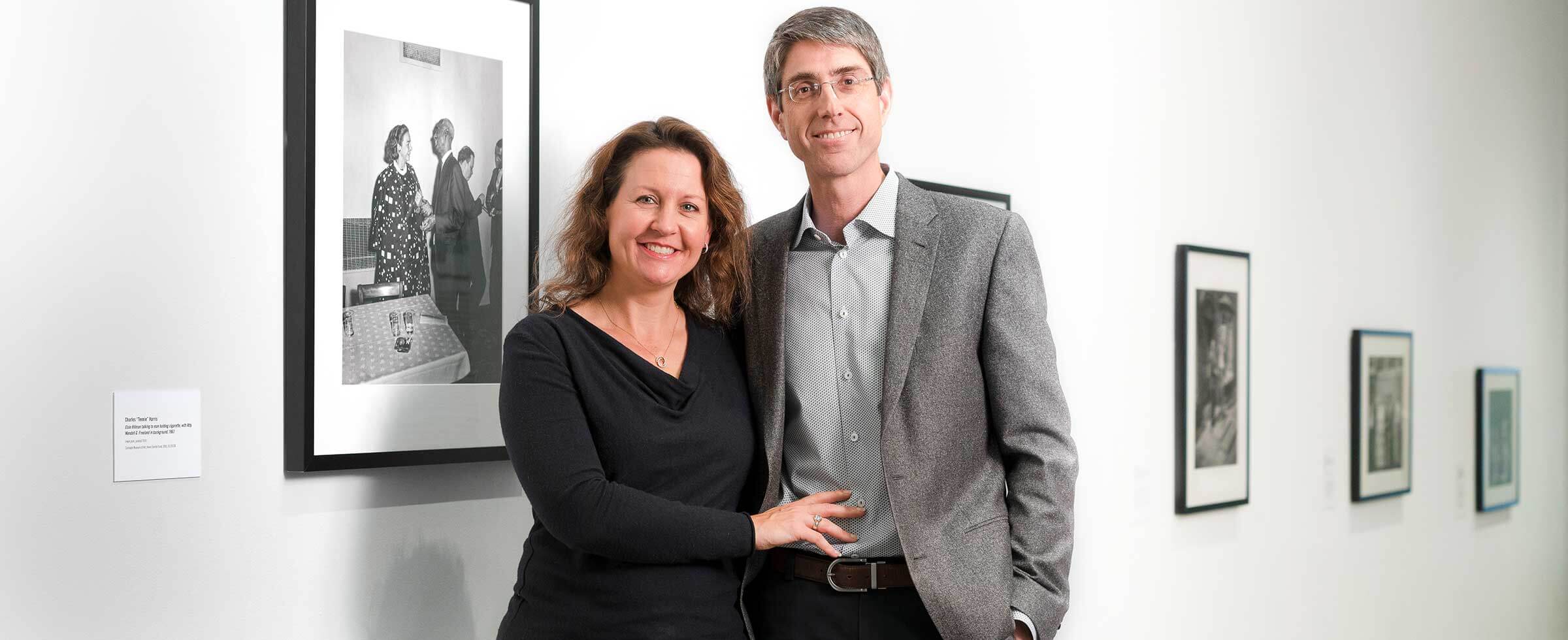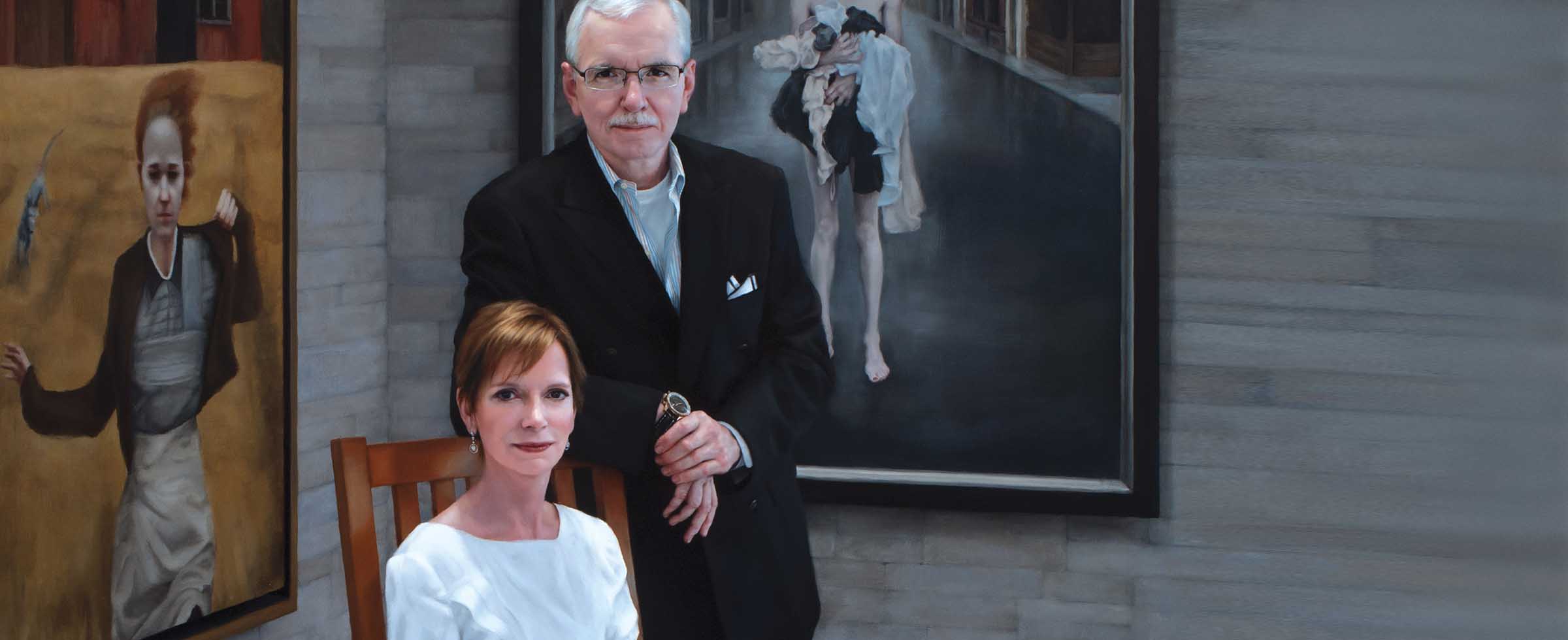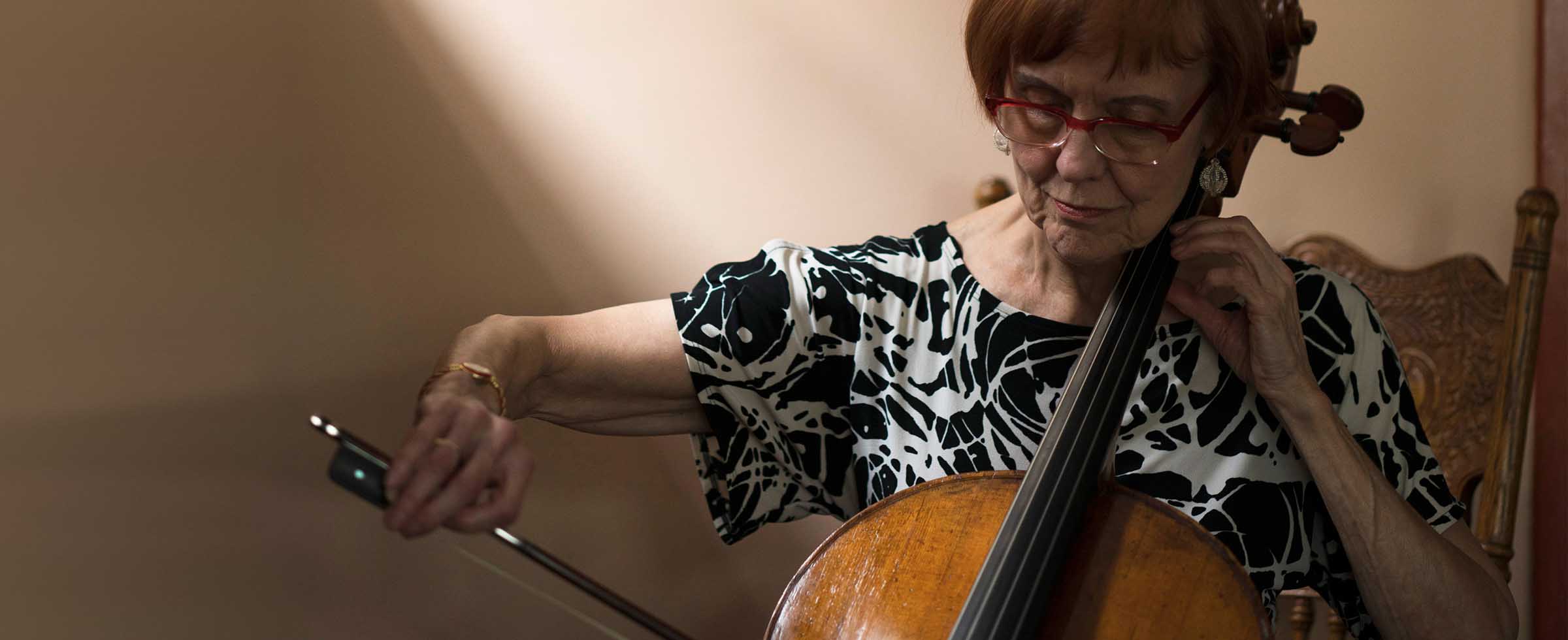Finding solace after violenceCenter of Life

Carol Fuller treasures childhood photos of her son, V, who was killed in 1997. The family’s artifacts are included in an exhibition at Hazelwood’s Center of Life, which honors the lives of those lost to violence.
PITTSBURGH’S HAZELWOOD NEIGHBORHOOD has seen its ups and downs. At its peak in 1960, it was burgeoning with 13,000 residents — largely due to the good jobs supplied by the Hazelwood Coke Works of U.S. Steel. More than 200 businesses lined Second Avenue.
“There was a time,” remembers Hazelwood resident Carol Fuller, “when everything we needed was right here.”
But the steel industry’s implosion ended the jobs, and the coke works plant closed in 1998. It was a depressingly familiar Pittsburgh story: A once-thriving community now struggled with poverty, disinvestment and unrest while more and more young people lost their lives to gun violence. Among them was Carol’s son, Robert Vincent Fuller, otherwise known as “V,” who was murdered at his workplace.
Hazelwood’s heyday and stories like V’s are juxtaposed in a powerful art exhibition titled “I Lived, We Live, What Did We Miss?” Part memorial and part history lesson, the exhibition opened in May at Center of Life, a neighborhood nonprofit that offers everything from music instruction to academic and family support for nearly 500 young people from low-income families each year. The Center’s free programs provide Hazelwood’s youth with the skills, educational support and training necessary to be strong and independent citizens. More than 90 percent of participating high school students transition to college or trade school. With The Pittsburgh Foundation’s grant-making support, totaling nearly $240,000 over the past two years, the Center’s founder and executive director, Tim Smith, is optimistic. “We’ve seen some rough times in Hazelwood,” he says, “but there are good things happening every day. You can learn so much here.”
Often, as “I Lived, We Live, What Did We Miss?” demonstrates, those lessons are best expressed through art. Carol and her sister, Terri, discuss V’s life, their loss and the healing power of the Center’s exhibit.
CAROL FULLER: My son, V, was born Aug. 10, 1974. He was a silly boy, a clown who loved to play jokes. He was a great cook, too. And he was very tall — he was like a string bean. That’s what I called him: my string bean.
He was my baby.
TERRI FULLER: He brought so much joy into our lives. He was a jokester who made everybody laugh. He just had this nice, pleasant way about himself.
The whole week leading up to his death, I had this feeling — this bad, sad feeling. I didn’t know what it meant, but I knew to pray, because I was so down. That Friday afternoon, I came home from work and cooked dinner with my son. And later, sometime around 9:30 or 10 p.m., somebody knocked on my door and said, “We heard your nephew got shot.” So I ran down to the bar where V worked — I wanted to know for myself whether it was true. That’s when I saw a crowd of people standing outside.
CAROL: I was at home in bed, having these strange pains. It was unusual — I’d never had pains like that before. It was like a premonition. I knew something was wrong; I just didn’t know what. And then my phone rang. It was my sister. She said, “Carol, what are you doing and where are you? Vincent is gone.”
Earlier that week, on Wednesday, was the last time I saw my son. He came up to me and hugged me. He said, “Mommy, I love you.” I said, “Okay, baby.” And then he was murdered on Friday. It was Jan. 24, 1997. He was working at the bar. Those places I was having pains — those were the same places where they shot him.
TERRI: I wanted to know what happened [to V] and I wanted to return it. I wanted to hurt somebody. I wanted to kill the person or people who killed my nephew. I carried that around for a long time. I had so much anger, bitterness and fear. Fear will debilitate you, and I had so much fear it was crippling. Then my aunt brought a woman to my mother’s house, who gathered us in a circle and just prayed for us. I still remember her words. She said, “Fear is not of God. Fear is of the Devil.” That stayed with me. I knew that whatever happened, I had to forgive these people.
I became a born-again Christian. There’s a scripture verse in the Bible that says, “In the year that King Uzziah died, I saw the Lord sitting upon a throne, high and lifted up.” I always put my nephew’s name in there. Because out of something bad, my heart changed. My life changed.
CAROL: For a long time afterward, I was just really messed up. I really was.
TERRI: We thought she was on the verge of a breakdown.
CAROL: But I couldn’t see it, because I thought I was doing everything right. It was me and my daughter together. It kind of messed her up, too — she was graduating from school; she was going to college, and, you know, it was just hard. But I prayed. I kept going to church. People kept talking to me and supporting me.
TERRI: At the time, gangs had just started to become prevalent in Hazelwood. And when V was murdered, reporters in the media tried as hard as they could to make it look like he deserved it. They knocked on my niece’s door. They knocked on my neighbors’ doors. You know, just to get something negative to report. But they couldn’t find anything. Everyone said, “Oh no, he was a gentleman. He was a nice guy. Why him? Vincent didn’t bother anybody.”
CAROL: This exhibit. I’m so glad for it…
TERRI: It means a lot that all these years later — 20 years later — Pastor Tim [Smith] came to us and said he wanted to do an exhibit about our kids in a positive way. It makes me feel good — not only about my nephew, but about all the other people. Because, listen: Good, bad or ugly, everyone has a family. And we live on after them. It’s bad enough that we’re hurting, but then the media reports on [young people who’ve been murdered] like they were nothing. Like they weren’t even human beings. Like they weren’t even part of the human race. So I know I’m excited about what’s going on here at the Center.
CAROL: How do I want people to remember my son? I want people to remember V just the way he was: his silliness, his sweetness, his goodness. I want him to be remembered for that. He was a good boy. He was a good boy. He was a good boy.
Original story appeared in the Report to the Community 2016-17





